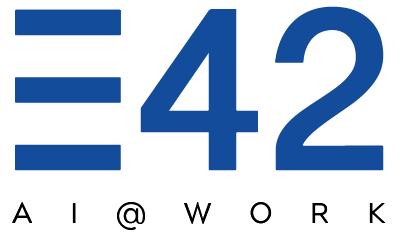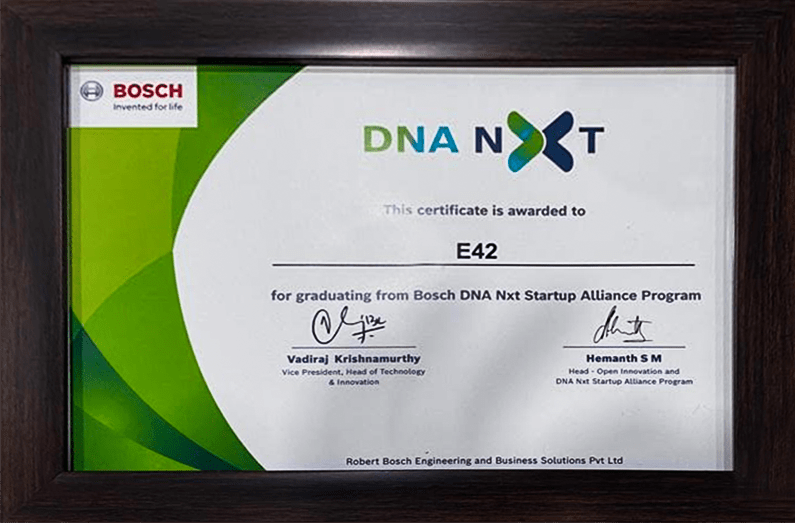In today’s fast-paced and dynamic business landscape, manual data capture presents a significant hurdle for enterprises aiming to maintain a competitive edge. The core challenge lies in its vulnerability to errors and inaccuracies due to its heavy reliance on human intervention for tasks such as data entry and interpretation. This human involvement introduces the possibility of mistakes that can profoundly affect the accuracy of data and subsequent decision-making processes. Even with meticulous review procedures, errors have the potential to persist, leading to the dissemination of flawed information throughout the organization.
Within the context of Accounts Payable (AP) processes, this challenge becomes particularly pronounced. Consider a scenario where an Accounts Payable team is responsible for handling 1000 transactions. Given the conservative estimate of a 1% human error rate in data entry, this could result in approximately 10 transactions containing errors. The implications of these discrepancies can be substantial, adversely affecting financial integrity, reporting accuracy, and the overall quality of decision-making within the organization.
A glance at all that this article covers:
- Challenges in Manual AP Processes
- The AI Revolution in Accounts Payable
- Benefits of Accounts Payable Process Automation
- Factors to Measure Return of Investment (ROI) in AP Automation
- Key Considerations while Selecting an Accounts Payable Automation Solution
- Best Practices for Implementing AI-Driven Automation of the Accounts Payable Process
- Conclusion
Challenges in Manual AP Processes
Manual AP processes, despite their long-standing presence, are not without their pitfalls. They rely heavily on human intervention for data entry and interpretation, which opens the door to errors and inaccuracies. The risk of mistakes infiltrating data integrity and decision-making looms large. Even with a careful review process, errors can persist, leading to the propagation of flawed information across the organization. Moreover, the manual nature of these processes consumes valuable time and effort, leading to delays in payments, inefficiencies in workflows, and a decline in overall employee productivity.
The AI Revolution in Accounts Payable
The automation of the accounts payable process signifies a transformative shift towards heightened efficiency and accuracy. This paradigm shift involves the integration of cutting-edge technologies like Cognitive Process Automation (CPA), Intelligent Document Processing (IDP), and Natural Language Processing (NLP). Through these advanced tools, manual and repetitive tasks within the accounts payable process workflow are delegated to AI co-workers, liberating human resources for higher-value tasks.
CPA-powered AI co-workers comprehend intricate enterprise data, process diverse file formats, and make real-time decisions. IDP harnesses machine learning to extract data from various documents, while NLP empowers communication between humans and machines.
Together, this orchestrated synergy of technologies ushers in an era where efficiency, accuracy, and strategic decision-making become the hallmarks of the accounts payable process, positioning organizations at the forefront of innovation and operational excellence.
Benefits of Accounts Payable Process Automation
AI in Accounts Payable Process doesn’t just yield financial benefits; it ushers in a spectrum of advantages that extend beyond the bottom line. The direct benefits of AI-led automation in the accounts payable process encompass metrics like cost savings, error reduction, and enhanced efficiency that can be quantified with tangible numbers. In contrast, the indirect benefits such as improved employee morale, vendor relationships, and future scalability—create an ecosystem where innovation thrives, and businesses can adapt and excel in a rapidly evolving landscape. The true power of AP automation lies not only in the digits it saves but also in the transformative potential it unlocks across the entire organization.
Factors to Measure Return of Investment (ROI) in AP Automation
The transition to accounts payable automation signals a paradigm shift that brings an array of benefits to the forefront. Let’s delve into the metrics that define the ROI of AP automation:

Total Number of Invoices Processed
Understanding the volume of work sets the baseline for measuring efficiency. The speed at which invoices are processed becomes a clear indicator of system efficiency. Tracking the rate of successfully processed invoices provides valuable insights into the workflow’s effectiveness and helps identify and address bottlenecks.
Average Cost Per Invoice
Cost analysis is at the core of ROI assessment. By considering various expenses, such as hardware, software, salaries, and more, calculating the average cost per invoice highlights areas for potential cost reduction. Efficient accounts payable solutions significantly reduce this expenditure, leading to substantial savings.
Invoice Cycle Time
Reducing the time taken from invoice receipt to payment not only eliminates late payment penalties but also positions businesses to capitalize on early payment discounts. An agile AP process, facilitated by automation, enhances financial flexibility.
Rate of Incorrect Payments
Manual processes often result in erroneous payments. Calculating the rate of incorrect payments against the total number of invoices paid emphasizes automation’s role in reducing errors. Fewer errors translate to fewer resources expended on corrections.
Rate of Exceptions
Exceptions in invoices can disrupt seamless processing. Tracking the rate of exceptions offers insights into process refinement and automation effectiveness. Minimizing exceptions enhances efficiency and contributes to a healthier ROI.
Discounts Captured
Efficient automation of the accounts payable process maximizes the utilization of early payment discounts. Measuring the rate of discounts captured underscores the system’s impact on cost savings and financial outcomes.
The Ratio of Electronic Invoices
The prevalence of electronic invoices simplifies processing and reduces manual effort. The ratio of electronic invoices reflects automation’s influence on workflow efficiency, providing a tangible measure of progress.
Reduced Fraud and Improved Internal Controls
Accounts payable automation strengthens internal controls, leading to a reduction in fraudulent activities. The resulting enhancement in financial health translates to tangible time and cost savings, as well as peace of mind.
Improved Vendor Relations and Scalability
Automation optimizes vendor relationships by streamlining payment cycles. As businesses grow, automation ensures that accounts payable processes can accommodate increased volumes seamlessly, without the complexity associated with manual processes.
Key Considerations while Selecting an Accounts Payable Automation Solution
Choosing the right accounts payable automation solution is a strategic decision that requires careful evaluation of available options. To make an informed choice, organizations should consider several critical factors tailored to their unique requirements.
Functionality and Features: The selection process begins with an evaluation of the features and capabilities of various accounts payable automation solutions. The focus lies on functionalities like invoice processing, data extraction, approval workflows, and integration with existing accounting systems. The solution’s alignment with the organization’s specific needs is of paramount importance.
Data Extraction Accuracy: A strong emphasis is placed on accuracy within the AP process. Solutions that incorporate advanced technologies such as Intelligent Character Recognition (ICR) and Intelligent Document Processing (IDP) are sought after. These technologies ensure precise data extraction from diverse invoice formats, even those with intricate structures.
Integration with Existing Systems: The importance of seamless integration with the organization’s present accounting and enterprise resource planning (ERP) systems cannot be overstated. The chosen solution should offer compatibility and facilitate smooth data exchange, with a focus on minimizing any disruptions to ongoing workflows.
Ease of Use: A user-friendly interface with intuitive navigation is preferred. The selected accounts payable solution should be easily adoptable by the AP team without the need for extensive training, thus ensuring a seamless transition to the new automated process.
Scalability: Future growth and the corresponding increase in invoice volume are key considerations. A solution is chosen that effortlessly scales to accommodate the projected rise in processing demands. This decision ensures the sustained effectiveness of AP automation as the organization expands.
Best Practices for Implementing AI-Driven Automation of the Accounts Payable Process
To enhance ROI in AP automation, embracing best practices for standardizing data capture processes emerges as a pivotal strategy. Standardization guarantees consistency, accuracy, and efficacy across the organization, mitigating errors and inconsistencies. Here’s an overview of the steps to seamlessly implement standardized data capture within the Accounts Payable automation process:
- Analyze Current Processes: The initial step involves a deep dive into the existing AP automation procedures, conducting a thorough examination to identify opportunities for optimization, eliminate redundant steps, and uncover potential gaps that could impede efficiency.
- Define Standardized Procedures: Precise protocols, templates, and guidelines are formulated to govern data capture within the AP automation process. This encompasses aspects like data formats, naming conventions, validation criteria, and other crucial parameters
- Document and Communicate: The standardized processes are meticulously documented, and their details are effectively communicated to all pertinent stakeholders engaged in the Accounts Payable journey. Ensuring a clear understanding and adherence to these established guidelines fosters a cohesive and well-structured data capture framework.
Conclusion
The adoption of AI-driven accounts payable automation stands as a transformative solution that addresses the challenges of manual data capture. Measuring the ROI of AP automation serves as a cornerstone for organizations embarking on the automation journey as it provides a continuous feedback loop for performance assessment, fostering improvement and optimization.
To thrive in the ever-evolving business environment, selecting the right accounts payable automation tools requires careful consideration of functionality, data extraction accuracy, integration, ease of use, and scalability. Implementing standardized data capture practices further solidifies the impact of AI-driven automation, ensuring consistency, accuracy, and efficacy across the organization. Embracing this digital transformation is not just a strategic move; it is the path toward optimal efficiency, exponential growth, and sustained operational excellence in the dynamic business environment of today and tomorrow.
Streamline Your Finance Operations with E42
E42 is a no-code Cognitive Process Automation (CPA) platform to build AI co-workers that are capable of automating various business processes with high speed and accuracy. Tailored for the finance domain, our AI co-workers excel in handling crucial tasks like Accounts Payable, Accounts Receivable, and financial reporting. Operating at an accelerated rate, these AI co-workers offer end-to-end process automation, benefiting both the finance team and the overall business. To embrace the future of finance with enterprise automation, get in touch with us at interact@e42.ai.



